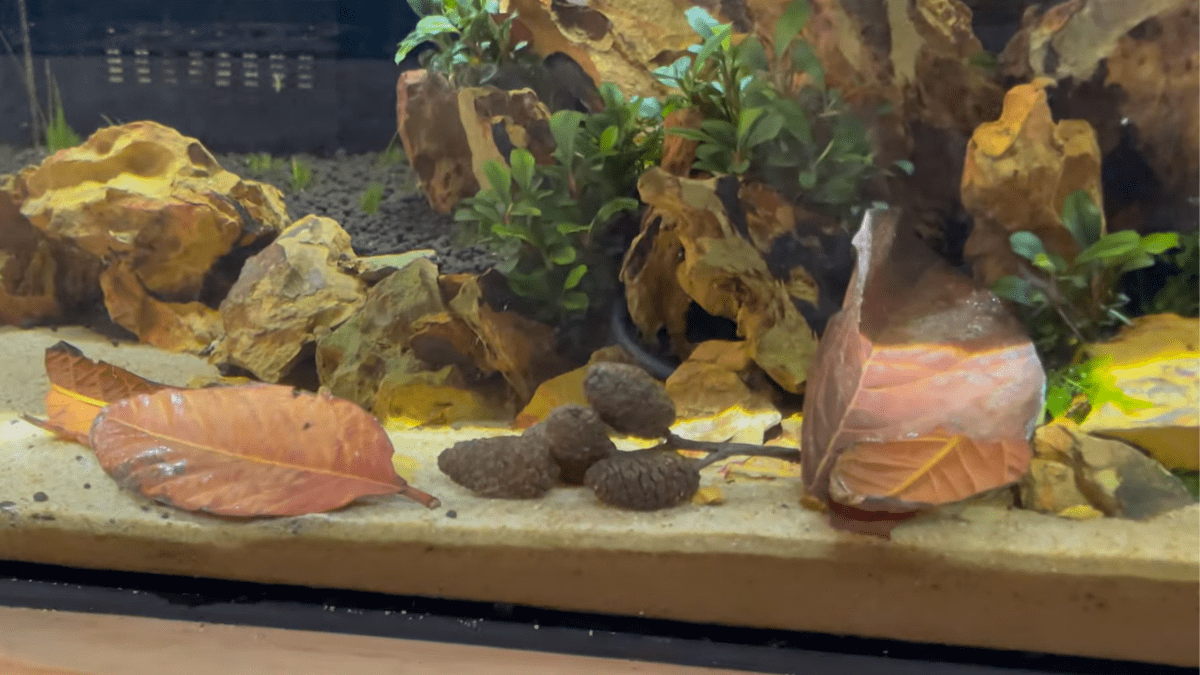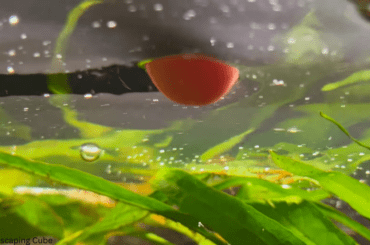Catappa leaves, more commonly known as Indian almond leaves are used in the aquarium hobby for a number of good reasons including their pH-controlling and medicinal properties.
These leaves can make a significant impact on the quality of the water in your tank. Especially Almond leaves are popular among betta fish keepers and black water aquarium keepers.
Basically, these leaves come from a tree called the Terminalia catappa which is found throughout South Eastern Asia, Africa, and upper Australia. Sometimes they are harvested by taking them off the tree for trade while some are the leaves that would have fallen off the tree. The size of the leaves can range from 5 inches to 15 inches for large leaves.
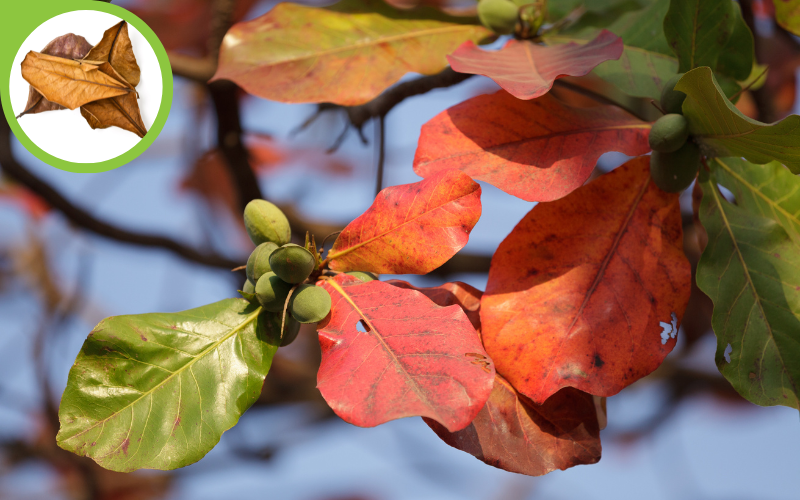
Benefits of Indian almond leaves in Aquariums
Catappa leaves or their extract release a number of chemicals when added to water and have a lot of amazing properties to benefit your fish. Let’s dive in.
Aquarium pH Controlling
It is a common practice to use Indian almond leaves in aquariums to help with your water quality. When these leaves are added to your aquarium, they start to break down and release Tannins and Tannic acids into your water reducing your aquarium water pH.
Do Almond leaves raise ammonia?
Generally, decaying organisms releases a certain amount of Ammonia. But in the case of Catappa leaves, they could reduce the pH value at the same time. In lower pH values, Dissolved Ammonia becomes less toxic to your aquarium fish. So Almond leaves can be used to treat aquariums when there are cycling problems.
Medicinal Properties
It has been found that Indian almond leaves have amazing, almost miraculous medicinal properties. They have antimicrobial properties, Antiparasitic properties, Antibacterial properties, and even antifungal properties.
There the antifungal properties are much more important as it helps to fight against a lot of common fish disease in the hobby. Basically, it can help your fish either combat these infections or help to cure them
Actually, there is no scientific evidence really behind this saying that it specifically works or it does not work, but successful fish keepers, have proved their medicinal properties by their experience.
Now it seems to be a trend that use these in your aquarium either to lower the number of infections your fish experience or to help them heal a little bit faster. Actually, the fishkeepers who use Methylene blue to treat their fish eggs from fungus can use a mix with Catappa leaves as a natural solution.
For Black Water Tanks
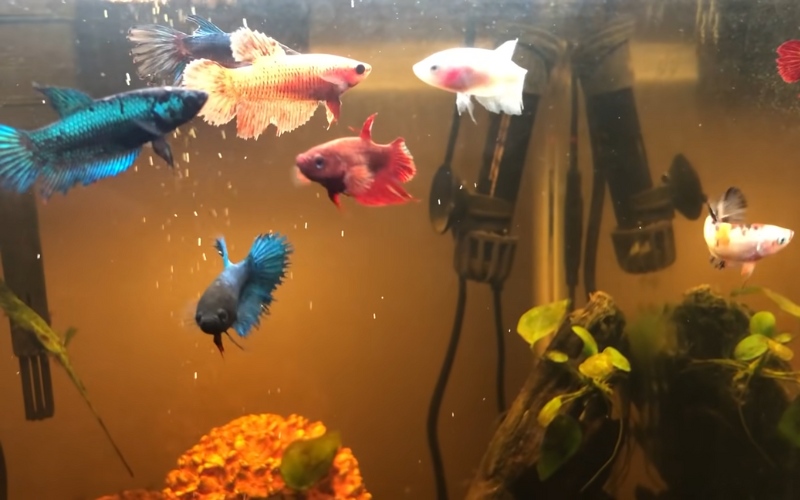
You can use Catappa leaves to get the darker tint in the water that is inherent to black water biotopes. The tannins produced by Catappa leaves mimic the color of the water in natural environments.
Great Snack for Invertebrates and Shrimps
Another reason why a lot of aquarists, particularly shrimp keepers, love Indian Almond leaves is that it is a great snack for invertebrates and even some other fish.
If you leave almond leaves in your tank for long enough, they end up decomposing and grow a biofilm. Shrimp just love to munch on that, and it’s just a great snack to have.
Often times fish fry are a little bit shyer to get the main source of foods in their aquariums such as any pellets or flakes that you are feeding them. So they will actually prefer the detaining matters like leaves.

Great Place for Bottom Dwellers to Hide
When the leaves are deposited at the tank bottom, they will become a great hiding place for bottom dwellers like Corydoras. As well as, they are an amazing home for fish fry and shrimp.
How do you use almond leaves in a fish tank?
Let’s talk about how to prepare almond leaves or other possible botanicals to put in your Aquarium.
Normally when you purchase a dried Almand leaf, you can just rinse it and directly add it to the water. When you place these leaves in your water, it’s going to float on the top for some days.

A dried Catappa leaf will take about 3 to 5 days to totally sink in the water. After that, it will start to decay and release Tannins and Tannic acids by decreasing the pH value of your water.
Indian Almand Leaves Extract
The next way you can use Catappa leaves is as an extract. If you’re someone who doesn’t want these leaves to be in your tank at all, maybe you don’t have a natural tank, or don’t want the appearance of a leaf in there, you can try this method.
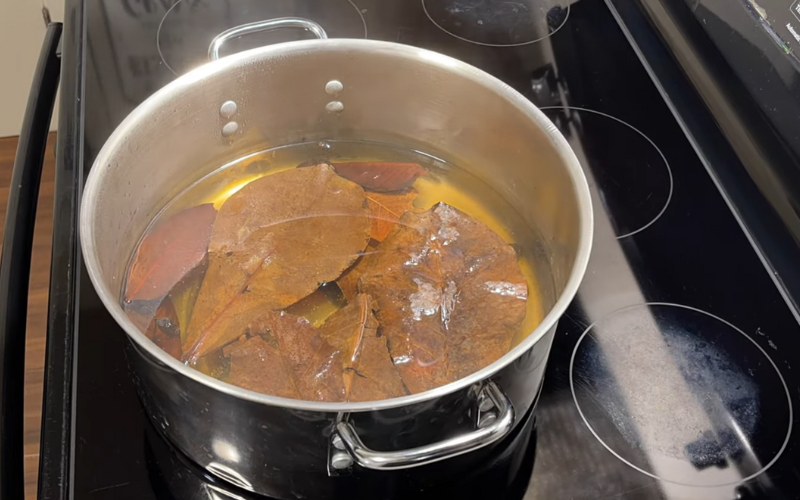
First, you have to boil the Catappa leaves until the water that you’re left with them takes a dark color. It getting dark means, it has extracted the Tannins of leaves.
Then you can take that water, bottle it, and insert it into your aquarium almost as an extract. That way you can get the same benefits of the Tannins, without dealing with leaves.
As well as if you are not comfortable with either the leaves themselves or extracting them, the last thing you can do is buy a bottle of Indian almond extract. Then you can directly add Tannins to your aquarium. Actually, it will offer more quick results.
How long do you leave almond leaves in the aquarium?
When these leaves have sunk to the bottom, they can be left there as plant matter until it decays. Over a period of 30 to 60 days, the Catappa leaves will begin to disintegrate. Depending on the tank setup, you can either remove or keep old Catappa leaves.
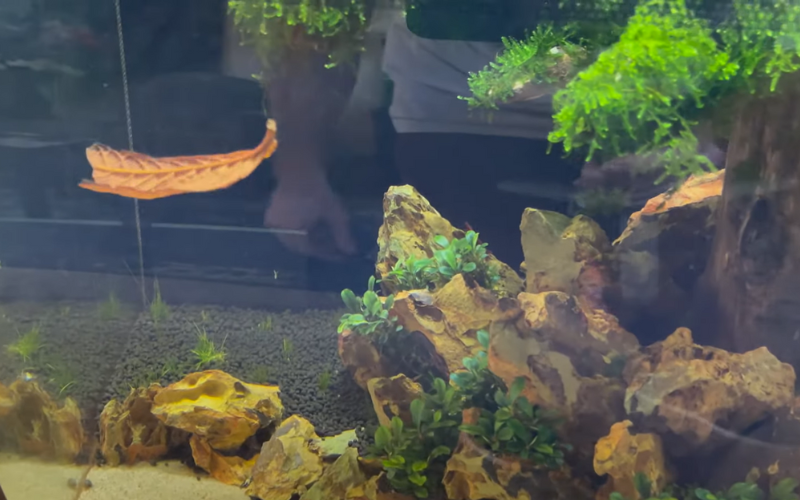
Normally in planted aquariums, you can keep those decayed leaves as a fertilizer for your plants. Otherwise, you may remove them once a month.
Alternatives for Indian Almand Leaves
- Alder Cones
- Dried banana leaves
- Drift Woods (Cholla Wood, Spider Wood)
Where to Buy
Normally you can buy dried Indian Almand leaves from your local fish store or Amazon.


Conclusion
Not all aquarium fish will benefit from Indian Almond leaves. Only the fish varieties that love to be in the lower pH range are OK with Catappa leaves. so it is always a good idea to do your research.
Also, when using dried Catappa leaves or black water extract in the tank, it is normal to become your aquarium water into a darker color. So unless you do not mind the discoloration, the benefits of using dried Catappa leaves in your fish tanks will surely make your fish happier and fish keeping more enjoyable.
Resources: glassbox420

